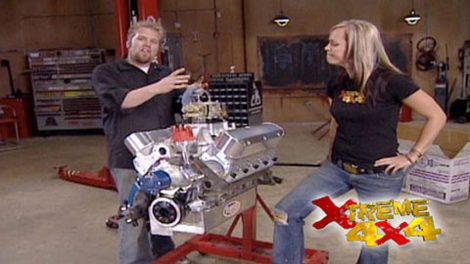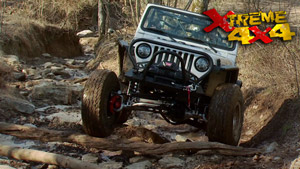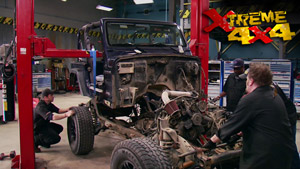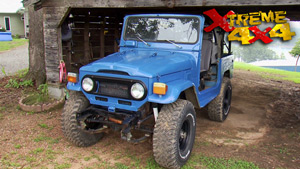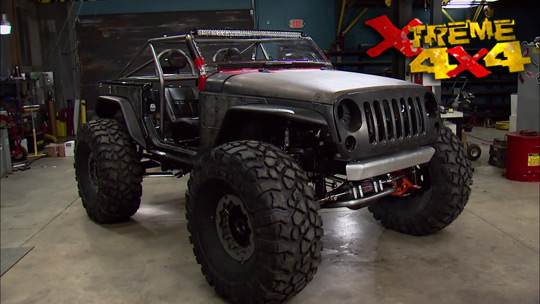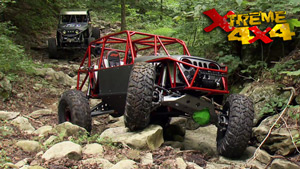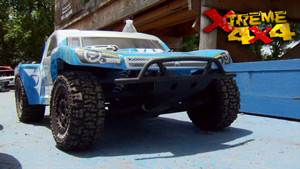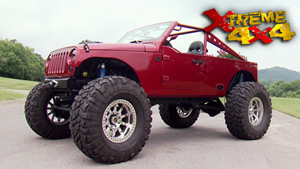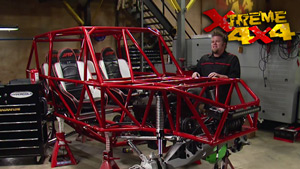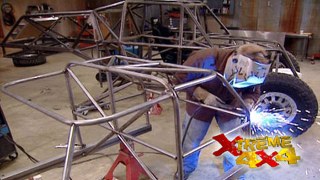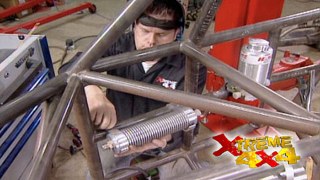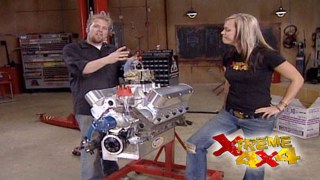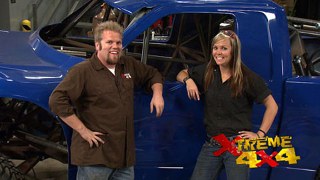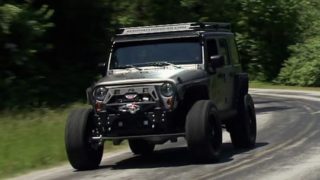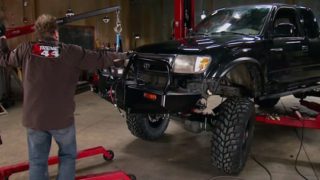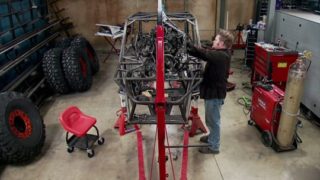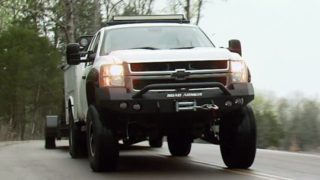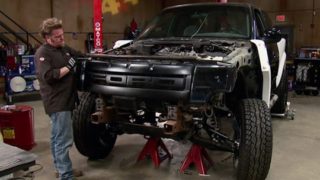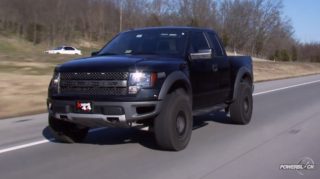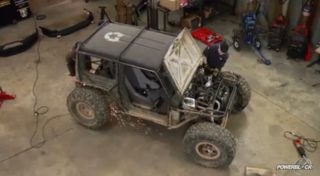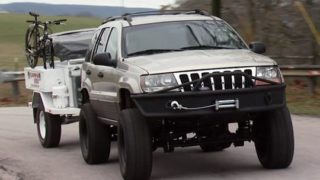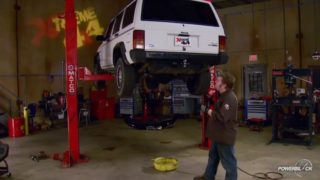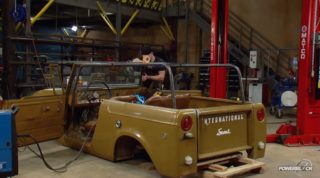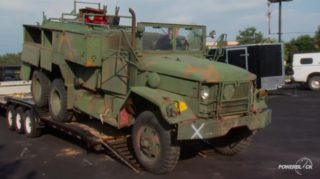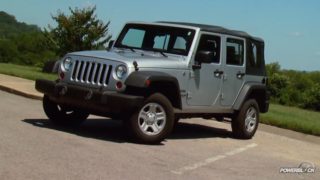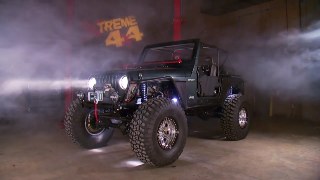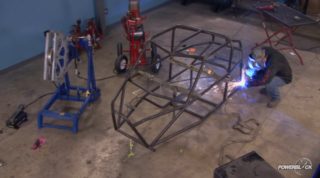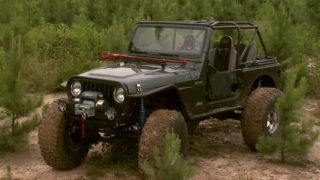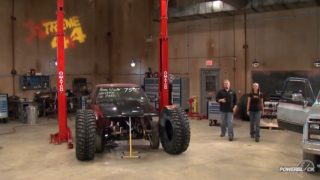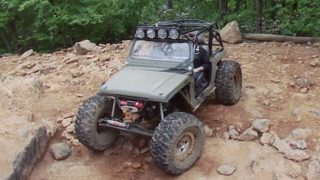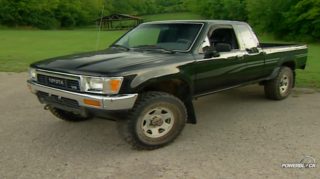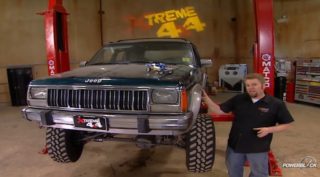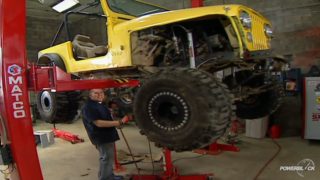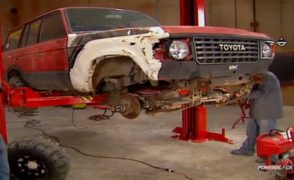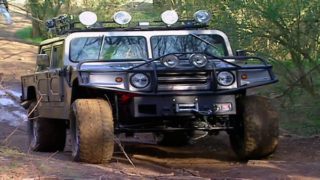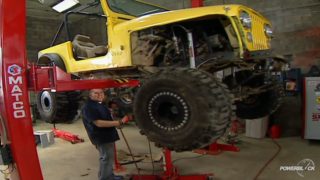More Trophy Truck Episodes
Xtreme 4x4 Builds
Want more content like this?
Join the PowerNation Email NewsletterParts Used In This Episode
ARP
Head Fasteners
Comp Cams
Camshaft with a .266 intake, .272 exhaust duration and a .726 lift.
CP Pistons
Pistons with a 4.15" bore, 6.5cc dome, and 1.25 compression height.
Dart
Pro 1 CNC Machined Cylinder Heads with a 62cc combustion chamber, 2.08" intake valve allowing to flow 325cc per minute and a and a 1.60" exhaust valve pushing 235cc on the exhaust side.
Dart
This Iron Eagle 434ci Ford Small Bock is based on a Ford 351 Windsor and is made with a suoerior iron alloy and has a 9.5" deck height, 0.5" blind cylinder bolt holes, and splayed (angled) bolts.
Eagle Specialty Products
351 Crankshaft with a 4" stroke and 6.25" long 4340 H-beam connecting rods with a full floating piston pin measuring .972" across.
Edelbrock
Super Victor Jr. 351 Aluminum Manifold is designed for large displacement engines with high RPM. The larger intake runners allow more fuel and air to be atomized before entering the cylinder and the gap between the runners keep that mixture cooler for more power.
Fel-Pro Gaskets
Performance Series Gaskets
Jesel Inc.
Adjustable Belt Drive Timing Set and Roller Rocker Arms.
MAHLE Aftermarket
Clevite 77 engine bearings utilize a superior TriMetal™ design producing a degree of conformability, embedability, slipperiness and fatigue resistance.
Moroso
External dry sump oil system with the filtered fittings, remote reservoir and a 5 stage oil pump with brackets and pulleys. Plus an electric Water Pump.
MSD Ignition
Pro-Billet Distributor, MSD6 Off-Road Ignition Control Box, Rev Control, HVC Coil, and Ignition Wires
Olson Motorsports
Dual kickout drysump oil pan made out of .090" aluminum with .250" billet rails
PC Performance
Carburetor and Spacer Plate.
Royal Purple
Max-Tuff assembly lube is an ultra-tough, synthetic lubricant designed for use in reassembling repaired equipment.
Speed-o-Motive
Engine builders that machined, balanced, and fit the block components.
Summit Racing
Aluminum Valve Covers
Total Seal
Piston Rings - 2 compression and 1 low tension oil ring.
